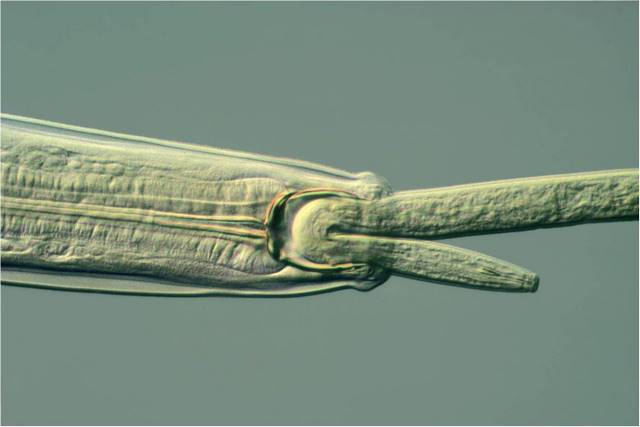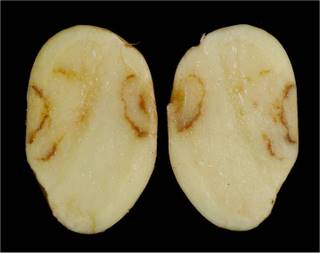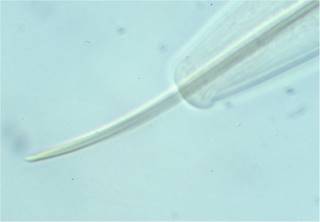Finally…..a blog! I’m Hannah, the now not so new and final Natural Talent apprentice. I’m based at the James Hutton Institute which has recently been formed with the merging of the Macaulay Institute in Aberdeen and the Scottish Crop Research Institute (SCRI) in Dundee. I’ve spent the last few months getting initiated into the microscopic world of soil biodiversity which is quite a challenge! With a greater share of the world’s biodiversity than tropical rainforests, the soil is home to more than a quarter of all living species on Earth. Thankfully, I don’t have to identify all of them especially as it is likely that most of them haven’t even been discovered yet! For example, it is thought that only 1% of soil microorganisms are known to science which means the world beneath our feet really is a final frontier just waiting to be explored. I’ll be focussing my attentions on mites and the arguably more endearing springtails but they will have to wait until my next blog- now I want to tell you all about “invisible worms” (or nematodes as they are formally known!).
I was lucky enough to spend six weeks in Dundee at James Hutton South learning about them and I can assure you, having spent many a happy hour counting them under a microscope that, despite being invisible to the naked eye – they do actually exist! Not only that, they exist in enormous numbers. In fact, they are probably the most abundant multicellular organism on the planet with around 30,000 species currently known, although this figure is thought to be a mere 5% of the total number of nematode species out there! In six weeks I wasn’t able to get as far as identifying even one to species level but I certainly learned a lot in my time there. Nematodes are aquatic organisms, inhabiting the film of water around soil particles and whilst they may be tiny, they are hugely important keystone species in soil ecosystems. They are vital to many soil processes including decomposition and nutrient cycling. Nematodes have adapted to life in almost all ecosystems on Earth, even extremely harsh environments from deserts to the Antarctic. They fall into specialised feeding groups including those that feed on bacteria, fungi and even other nematodes!

A predatory nematode eating another nematode! Photo kindly donated by Roy Neilson
A great many are also parasitic to animals (e.g. hookworms, pinworms and heartworms) and plants. Indeed, many are well-known crop pests and can be responsible for transmitting diseases such as Tobacco Rattle Virus (TRV) which can have considerable economic impacts for UK potato farmers (see the effects of TRV on potatoes in the photo below). The virus affects a great many other plant species too, including of course tobacco crops. My supervisor Roy Neilson works hard virus testing soil samples for farmers to help them win the battle and it was fascinating to learn how it’s done.

Nematodes are not always an unseen enemy though – the majority are beneficial to agriculture and horticulture by contributing to vital soil improving processes. One group of entomopathogenic nematodes (parasitic species that infect insects) are even used as pest control and can be an effective alternative to pesticides. This gruesome process involves a nematode entering a host insect’s body and releasing bacteria which eventually kill the host for the nematode’s offspring to consume….yum!

A plant-feeding nematode with its needle-like mouthpart or 'stylet' (Photos courtesy of Roy Neilson)
Despite some being stealthy predators, nematodes are a tasty meal for many other soil organisms including predatory mites. There’s even a group of specialised fungi that set traps for unsuspecting nematodes. The type of trap varies and can involve sticky nets or knobs and constricting rings that catch their prey as they ‘swim’ through the fungi’s loop-like snare. This then tightens around the nematode before sucking the life out of it. It’s tough down there in the underworld!
During my time in Dundee I also helped with the annual sampling of their long-term arable sustainability project at Balruddery Farm and I was rewarded with glorious April sunshine, unspoilt views of the River Tay and skylarks in full voice overhead….happy days! If you want to find out more about this exciting research check out the link below:
http://www.scri.ac.uk/research/sustainability
Well that’s all from me for now but before I sign off I’d just like to say a huge thank you to Roy Neilson, Cathy Hawes and everyone at Dundee for looking after me so well and making my short time there so enjoyable and such a fantastic learning experience.
Tune in next time to find out what I’ve been up to since and meet my little mite friends 🙂
Bye for now!
